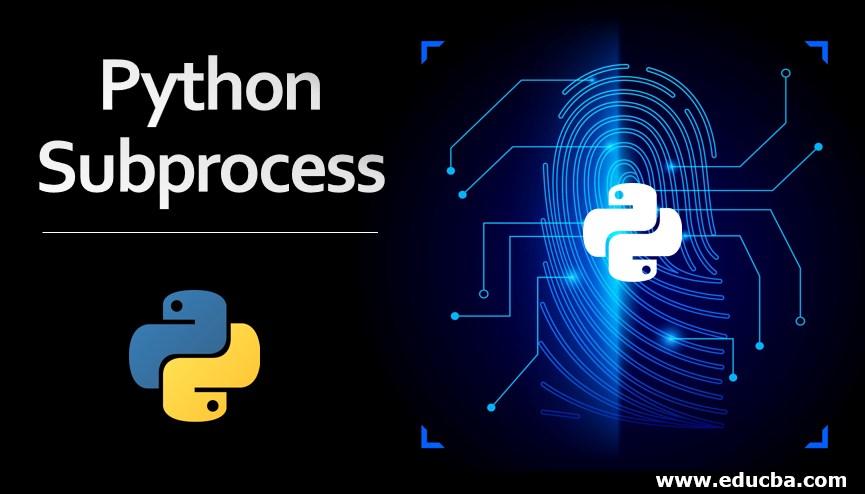

- PYTHON SUBPROCESS GET OUTPUT IN REAL TIME HOW TO
- PYTHON SUBPROCESS GET OUTPUT IN REAL TIME UPDATE
- PYTHON SUBPROCESS GET OUTPUT IN REAL TIME FULL
- PYTHON SUBPROCESS GET OUTPUT IN REAL TIME CODE

However, when I ran the following code, the output appeared to be buffered somewhere, causing it to appear in two chunks, lines 1 through 332, then 333 through 439 (the last line of output) from subprocess import Popen, PIPE, STDOUT I figured that I'd just execute the program using subprocess.Popen, use stdout=PIPE, then read each line as it came in and act on it accordingly.
PYTHON SUBPROCESS GET OUTPUT IN REAL TIME UPDATE
This allows inline update (lines ending with '\r' overwrite previous output line) from the subprocess:,Is it possible to get 'realtime' program output of a program executed using subprocess? Is there some other option in Python that is forward-compatible (not exec*)? ,You may use an iterator over each byte in the output of the subprocess. n(, stderr=sys.stderr, stdout=sys.stdout) You can direct the subprocess output to the streams directly. P = subprocess.Popen(cmd, shell=True, stdout=subprocess.PIPE, stderr=subprocess.STDOUT)

= invoke_process_popen_poll_live =įound this "plug-and-play" function here. runProcessWithLiveOutput.pyĮxecute which commmand : Download this into the same directory as the Bash loopWithSleep.sh as an example program. # Poll process.stdout to show stdout liveįor an example that pulls all this together, see my runProcessWithLiveOutput.py on github. Process = subprocess.Popen(shlex.split(command),shell=False,stdout=process.PIPE) However if you use subprocess.Popen along with Popen.poll() to check for new output, then you see a live view of the stdout. If you start a process using process.call() or process.check_output(), then you cannot get the output until the process is compete.
PYTHON SUBPROCESS GET OUTPUT IN REAL TIME FULL
Below is the full script: #!/bin/bashĮvery second it displays a line of output and takes a total of 5 seconds to run. However using poll, you get the ouput in real-time.Īs an example of a long running command, consider the Bash script loopWithSleep.sh which I’ve uploaded to github. This is a better end-user experience for longer running jobs.,You then get an example of how municate() does not show the output until the subprocess is complete.
PYTHON SUBPROCESS GET OUTPUT IN REAL TIME HOW TO
However if you use subprocess.Popen along with Popen.poll() to check for new output, then you see a live view of the stdout.,In this article I will show how to invoke a process from Python and show stdout live without waiting for the process to complete. Using subprocess.Popen, subprocess.call, or subprocess.check_output will all invoke a process using Python, but if you want live output coming from stdout you need use subprocess.Popen in tandem with the Popen.poll method.,If you start a process using process.call() or process.check_output(), then you cannot get the output until the process is compete.
PYTHON SUBPROCESS GET OUTPUT IN REAL TIME CODE
Below is an example command:,The above will loop and keep on reading the stdout and check for the return code and displays the output in real time. To run a process and read all of its output, set the stdout value to PIPE and call communicate().,subprocess-Works with additional processes.,I had one more problem in parsing the shell commands to pass it to popen when I set the shell=False. I tried this, and for some reason while the code for line in p.stdout:īuffers aggressively, the variant while True: Have you tried omitting the sydout=PIPE so the subprocess writes directly to your console, bypassing the parent process? This loop will stop as soon as the process completes leaving out a need for a break statement or possible infinite loop. ,I used this solution to get realtime output on a subprocess. Sorry I no matter how many time I look into it, subprocess etcetera is something I just can't ever get to work. Is this supposed to hang indefinitely? I would wish a given solution to also include boilerplate code for editing the loop when the initial subprocess is done. process = await create_subprocess_shell(*command, stdout=PIPE, stderr=PIPE, shell=True) instead of process = await create_subprocess_exec(.). Hi, that worked for me but I had to add the following to get rid of some error messages: import nest_asyncio nest_asyncio.apply() and to use shell command, i.e.


 0 kommentar(er)
0 kommentar(er)
